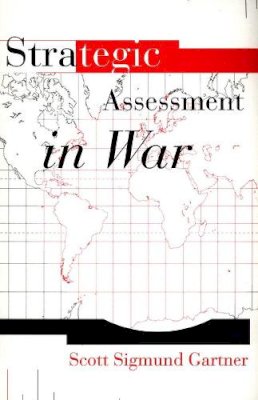
Stock image for illustration purposes only - book cover, edition or condition may vary.
Strategic Assessment in War
Scott Sigmund Gartner
€ 40.12
FREE Delivery in Ireland
Description for Strategic Assessment in War
Paperback.
How do military organizations assess strategic policy in war? In this book Scott Gartner develops a theory to explain how military and government leaders evaluate wartime performance, how much they change strategies in response to this evaluation, and why they are frequently at odds when discussing the success or failure of strategic performance.
Blending history, decision theory, and mathematical modeling, Gartner argues that military personnel do reevaluate their strategies and that they measure the performance of a strategy through quantitative, "dominant" indicators. But different actors within a government use different indicators of success: some will see the strategy as succeeding when others see it as failing because of their different dominant indicators. Gartner tests his argument with three case studies: the British shift to convoys in World War I following the German imposition of unrestricted submarine warfare; the lack of change in British naval policy in the Battle of the Atlantic following the German introduction of Wolf Packs in World War II; and the American decision to deescalate in Vietnam after the Tet Offensive. He also tests his approach in a nonwar situation, analyzing the Carter Administration's decision to launch the hostage rescue attempt. In each case, his dominant indicator model better predicts the observed behavior than either a standard-organization or an action-reaction approach.
Blending history, decision theory, and mathematical modeling, Gartner argues that military personnel do reevaluate their strategies and that they measure the performance of a strategy through quantitative, "dominant" indicators. But different actors within a government use different indicators of success: some will see the strategy as succeeding when others see it as failing because of their different dominant indicators. Gartner tests his argument with three case studies: the British shift to convoys in World War I following the German imposition of unrestricted submarine warfare; the lack of change in British naval policy in the Battle of the Atlantic following the German introduction of Wolf Packs in World War II; and the American decision to deescalate in Vietnam after the Tet Offensive. He also tests his approach in a nonwar situation, analyzing the Carter Administration's decision to launch the hostage rescue attempt. In each case, his dominant indicator model better predicts the observed behavior than either a standard-organization or an action-reaction approach.
Product Details
Format
Paperback
Publication date
1999
Publisher
Yale University Press United States
Number of pages
258
Condition
New
Number of Pages
256
Place of Publication
, United States
ISBN
9780300080698
SKU
V9780300080698
Shipping Time
Usually ships in 7 to 11 working days
Ref
99-11
Reviews for Strategic Assessment in War
